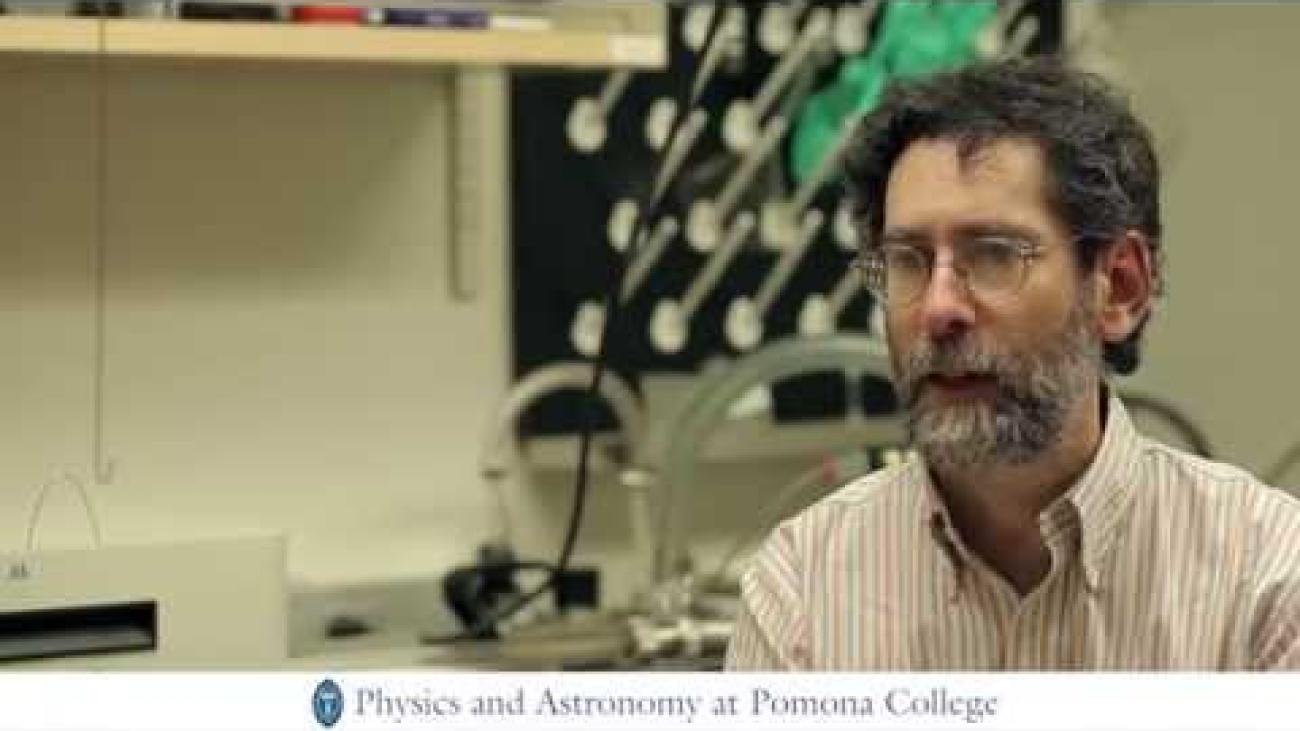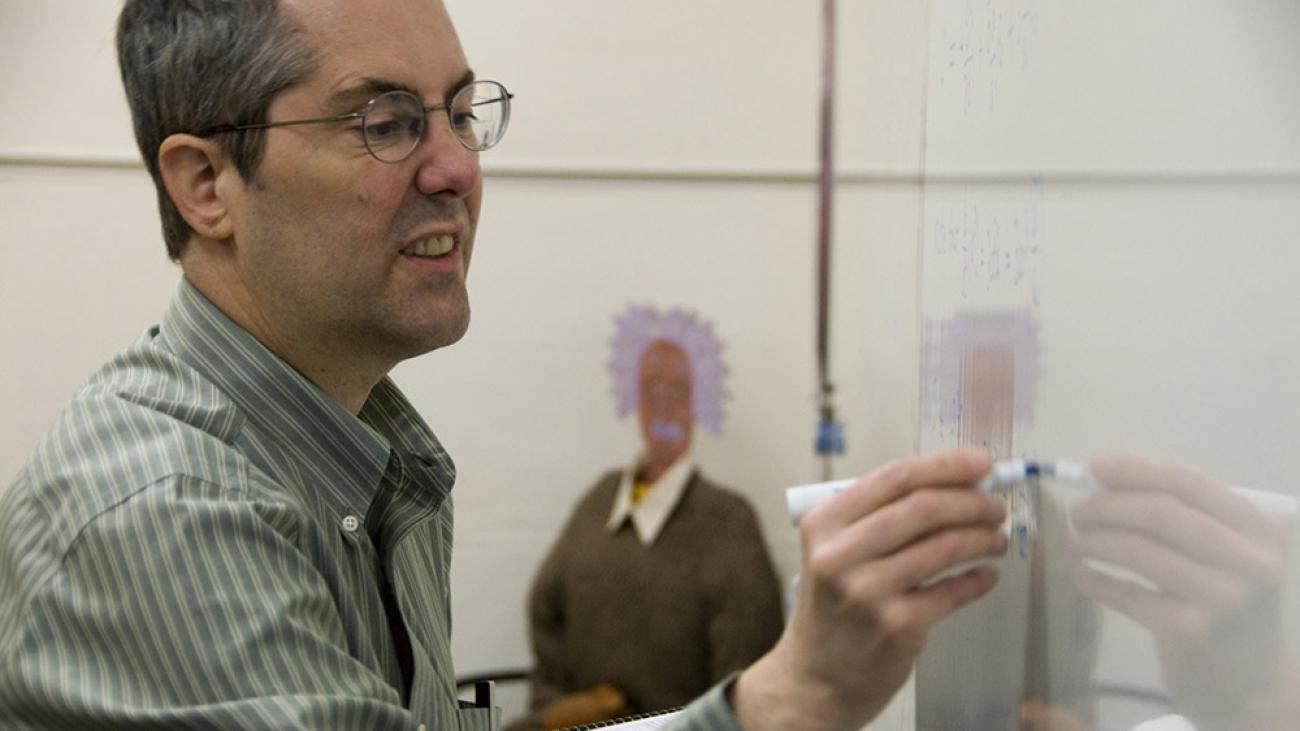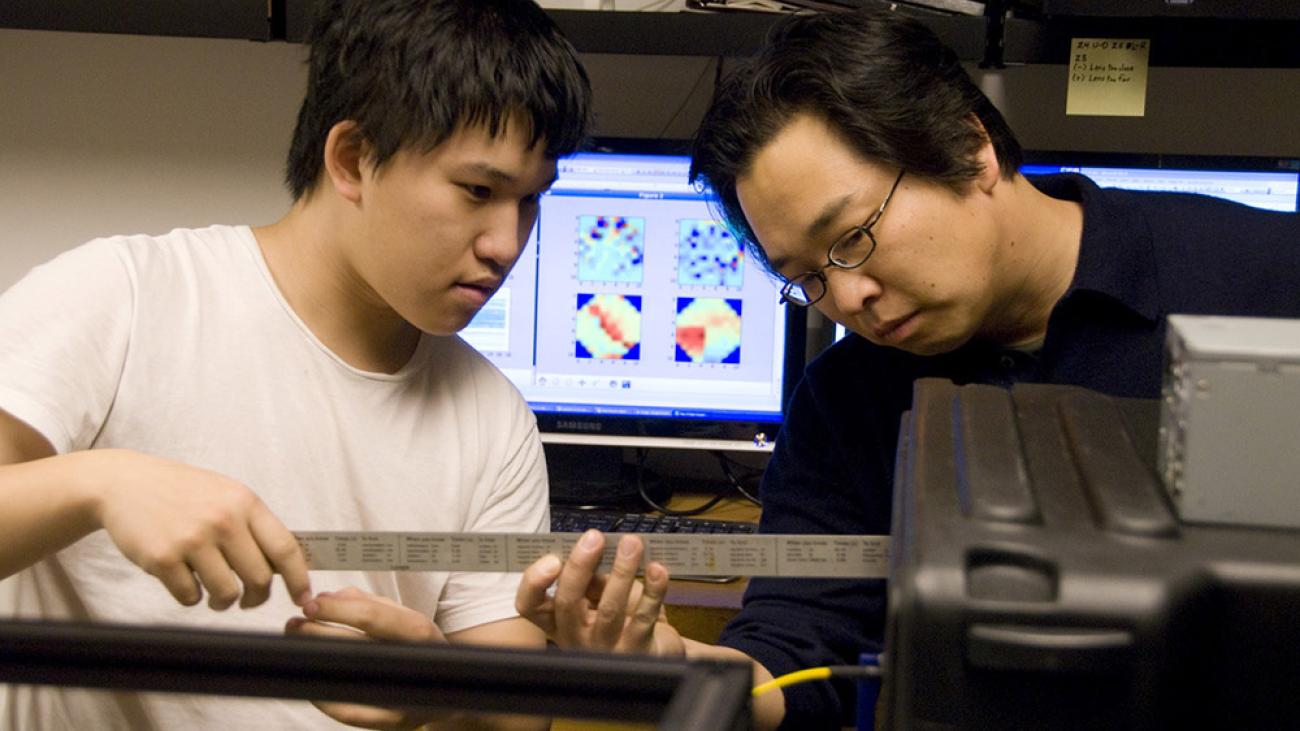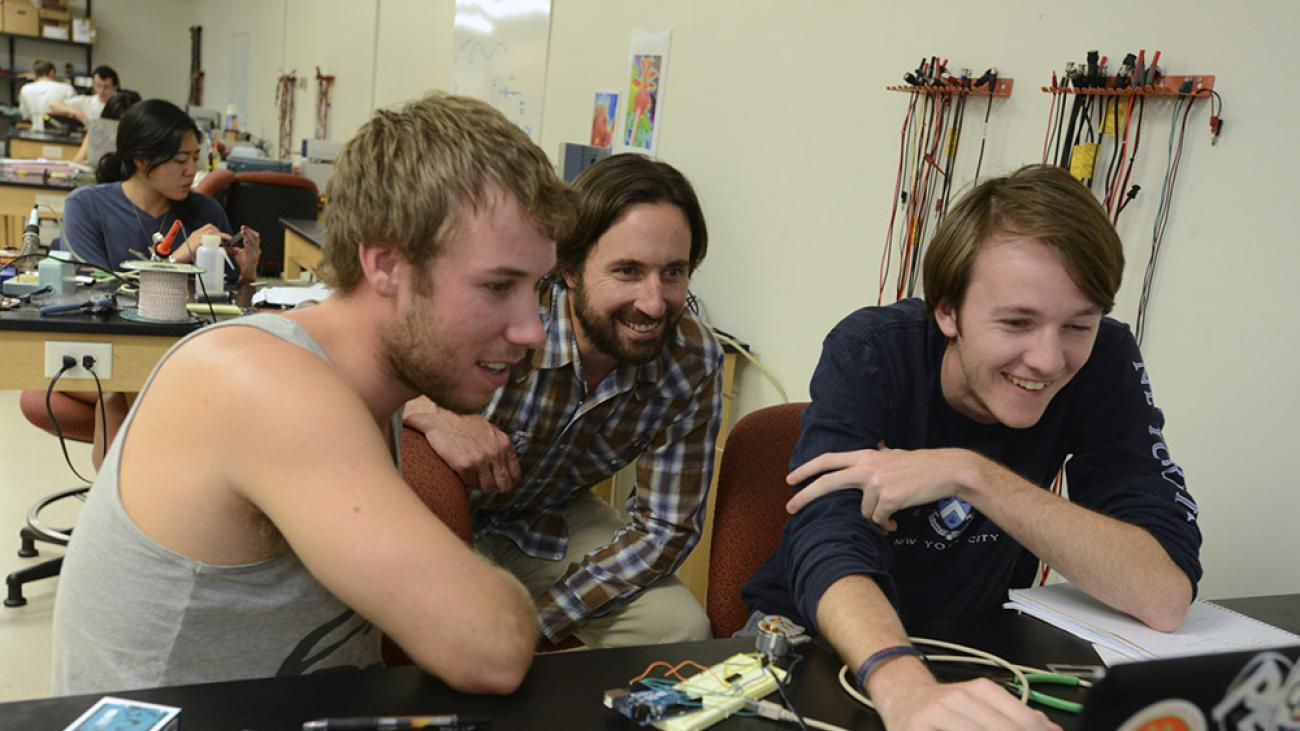Study the fundamental properties of energy, matter and the universe using some of the most advanced equipment available to undergraduate students.
Our innovative curriculum explores topics ranging from “the six ideas that shaped physics” and the physics of music to general relativity and cosmology. Theses are required, and majors are encouraged to elect independent research projects.
A highlight of our department is the incredible access students have to research-grade equipment including the Table Mountain 1-meter telescope, a scanning electron microscope and a tunneling microscope.
To meet diverse interests, the physics major includes multiple tracks: physics, astrophysics, astronomy, and Earth, Planetary and Space Sciences.
Our graduates are problem-solvers and include research scientists, astronomers, doctors, lawyers, teachers, entrepreneurs, computer programmers and movie technicians.
What You’ll Study
- Current models in both Classical and Quantum Mechanics
- Topics in Electricity and Magnetism, and Statistical Mechanics
- A broad range of experimental and data-analysis techniques
- Design and construction of circuits and experimental devices
- Research methods for conducting and presenting research clearly, logically and ethically






